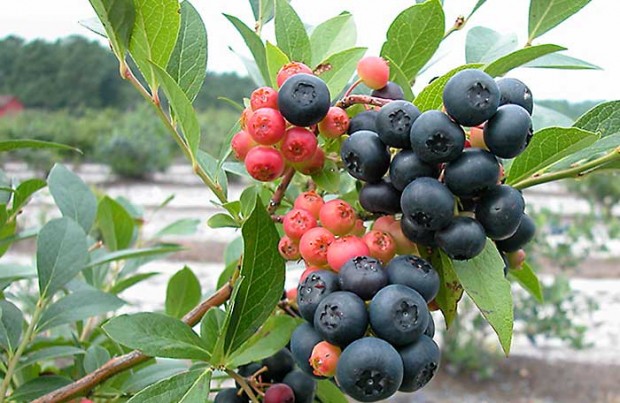The U.S. Department of Agriculture (USDA) was recently awarded a patent for ‘Nocturne,’ a blueberry cultivar developed by Agricultural Research Service (ARS) scientists. The new plant came from a blueberry cross made in 1993, and the plant was subsequently selected and evaluated from 1996 to 2011. ‘Nocturne,’ tested under the name “US 1056,” is a cross between ‘US 874’ (a mixed species hybrid) and ‘Premier’ (a commercial rabbiteye blueberry). This cross incorporates germplasm from three different blueberry species, including one with extreme cold-hardiness.
‘Nocturne’ is a vigorous, winter-hardy, black-fruited blueberry. “This variety is intended to be a specialty market plant for home, landscape, and ornamental use,” according to ARS plant geneticist Mark Ehlenfeldt, who hybridized the plant. It is especially notable for having winter hardiness comparable to northern highbush blueberry cultivars and for being slow to break dormancy in spring, making it unlike any other rabbiteye blueberry hybrids currently available.
In New Jersey, where ‘Nocturne’ was developed, the plant bears fruit reliably, averaging 12 pounds per plant. Unripe fruit is vivid and red-orange, providing attractive landscape interest. Ripe fruit is black, sweet and medium-sized, with a flavor atypical of either rabbiteye or highbush blueberries. Fruit ripens in late midseason to late season. The scar quality—how cleanly the fruit separates from the stem—is fair, and the fruit has only moderate firmness, so it is not recommended for storage or shipping by commercial growers. ‘Nocturne’ plants are expected to be available for retail purchase in 2017.

